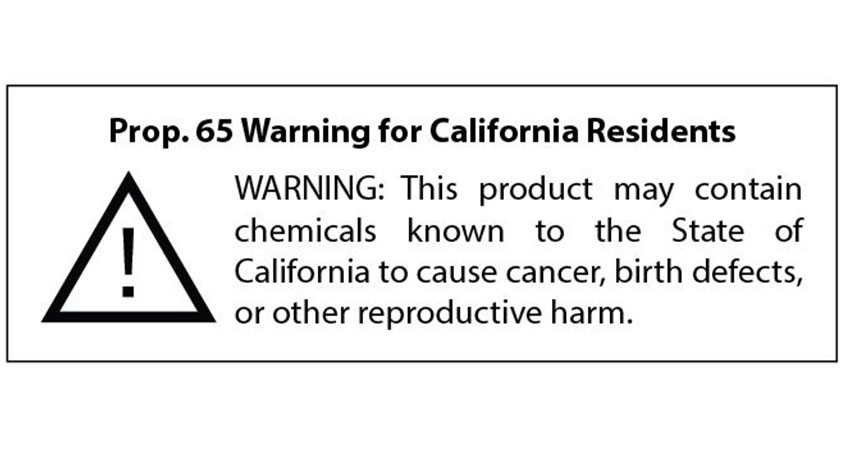A new California Proposition 65 mandate took effect on January 3, requiring health warning labels for all cannabis products sold in the state. Failure to comply with the requirements can and will result in enforcement against cannabis producers and sellers, resulting in hefty penalties. Here’s what you need to know.
Some Background on Proposition 65 and Cannabis
California’s Proposition 65, also known as the “Safe Drinking Water and Toxic Enforcement Act of 1986,” requires various parties in the supply chain for consumer products to provide warnings on products they sell in the state if exposure to certain chemicals in those products will pose a significant risk of cancer or reproductive harm. Proposition 65 applies to any company that sells products in California, regardless of whether the business is headquartered or manufactures products in California.

“Cannabis (Marijuana) Smoke” was listed under Proposition 65 in 2009 because of the potential that it contains ingredients or emits chemicals known to cause cancer. These chemicals include toxins such as arsenic, benzene, cadmium, formaldehyde, lead and nickel. In January 2020, Delta-9-Tetrahydrocannabinol (THC) was added to the list of toxic chemicals under Proposition 65 because of THC’s potential to cause reproductive harm. Now, both THC and cannabis smoke are listed under Proposition 65 and require warning labels.
What This Means for You and Your Company
The updated chemical list, which includes THC, became effective January 3, 2021, so the clock to come into compliance is ticking if you are not already complying. Many cannabis companies selling in California already comply with Proposition 65 by including warnings on their products that emit cannabis smoke. However, now companies that have previously issued a consumer warning regarding cannabis smoke must expand their warnings to include both the potential risk of cancer and the potential risk of reproductive harm. Additionally, products that previously did not require a warning for cannabis smoke will now be subject to Proposition 65 for exposure to THC.
The listing of THC implicates a broader range of cannabis products because it affects any product that contains detectable levels of THC, including products that contain less than 0.3% THC in compliance with the 2018 Farm Bill. Under the THC listing, a wide range of cannabis and hemp-derived CBD products, including products that do not emit smoke, such as edibles, topicals and other concentrates are subject to the Proposition 65 labeling requirements.
The agency that oversees Proposition 65 has provided so-called “safe harbor” levels for many listed chemicals that allow companies to forego a warning label if exposure to the chemical occurs at or below a certain threshold. However, no safe harbor level has been established for cannabis smoke or THC, and so the burden falls to the business to determine if the levels of the chemical pose a significant risk to the consumer. This determination typically requires extensive and costly testing that is not practical for most businesses. Thus, parties in the cannabis supply chain should work to properly label all cannabis-related products at this time. Failure to do so is risky. Proposition 65 “bounty hunters” team up with individuals to enforce Proposition 65 by sending notice of violation letters and then often filing lawsuits against businesses they believe are in violation of the statute. Many of these demands and lawsuits settle, as the cost to litigate is expensive. Settling, though, can be expensive, too.








